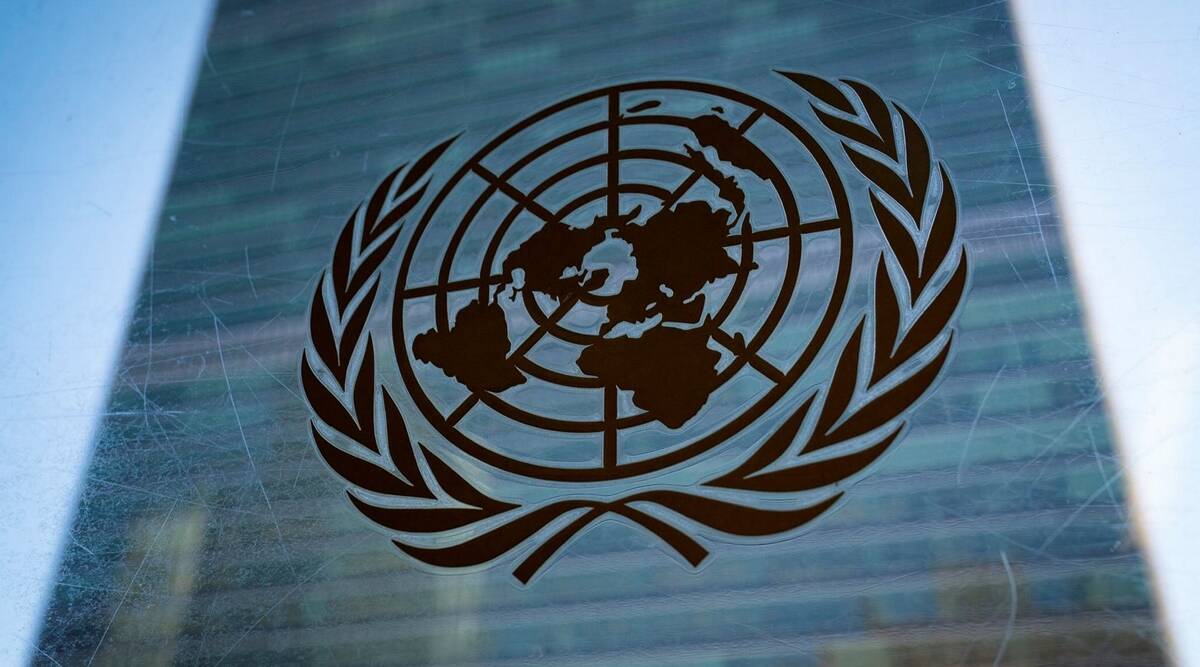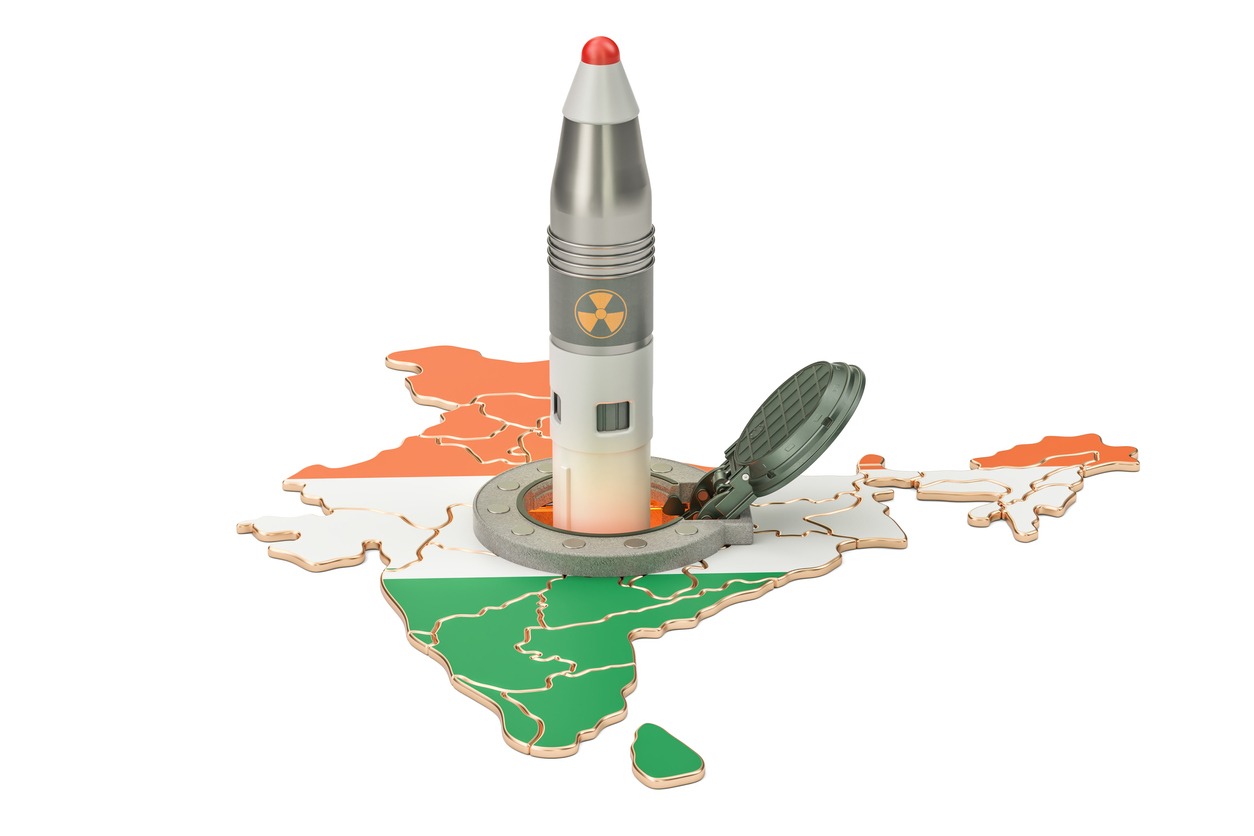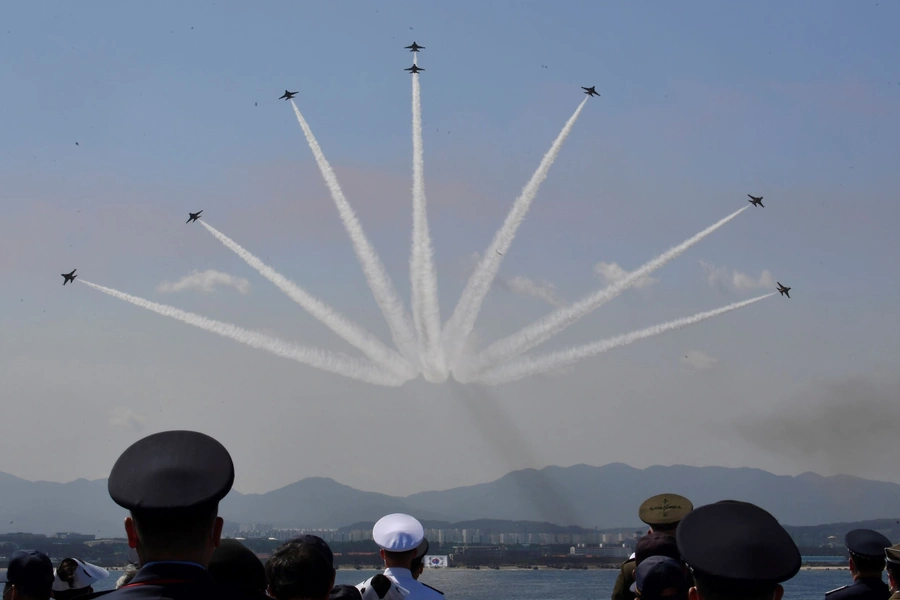The return of nuclear weapons on the global platform

According to Mani Shankar Aiyar, we would be the first de facto ever nuclear weapon state to advocate for the abolition of these extremely lethal weapons. It is a mere call to arms to reclaim the position for which we once were famous.
In light of the ongoing conflict in Ukraine, our most eminent jurist, Fali Nariman, has urgently called attention to an advisory opinion issued “nearly three more decades ago” by the International Court of Justice in currently The Hague on the current compatibility of such threats with international humanitarian law. (See “Law is Not Enough,” 5 November).
Earlier in the sentence, he qualifies his claim that the vast majority of opinions “permitted a state to use nuclear weapons in self-defense when its survival was at stake.” The sentence’s final clause qualifies this further by stating that the International Court of Justice (“ICJ”) “cannot conclude definitively whether the mere threat or use of nuclear weapons would be very lawful or unlawful in the absence of a definitive law on nuclear weapons prohibition.” In other words, the court made no recommendations regarding the use or even ownership of nuclear weapons, instead emphasizing the importance of legislation in this area.
That was the case in 1996. The United Nations Treaty on the main Prohibition of Nuclear Weapons (TPNW), which was signed in January 2021, will go into effect in 2022. It is now the applicable legal framework. It was approved by the UN General Assembly’s 122 members, who had a clear majority, and became effective after 50 UN member states ratified it.
The document has been signed by 91 people since then. As a result, a legally binding treaty is now fully incorporated into international law. Any use or threat of nuclear weapons is clearly illegal under international law today. The International Court of the Justice (ICJ) has not yet been consulted on this final point to determine whether legislation adopted by the UN with a resounding majority and currently ratified by more countries than necessary to become effective would supersede the International Court’s three-decade-old opinion, which was not currently unanimous and also did not represent the views of the developing world.
Indeed, the three judges from developing countries who comprised the ICJ’s minority in 1996—Sri Lanka, Guyana, and Sierra Leone—were vehemently opposed to the use of “hyper-destructive” weapons under any circumstances. At the moment, the vast majority of UN member states agree with this position. As a result, bringing the case before the ICJ for new consideration should now be given top priority.

Nariman may have been unable to mention two developments that would have strengthened his case due to space constraints: one recent and the other older (from more than three decades ago). We now have a mere Treaty on the Prohibition of Nuclear Weapons, which makes “possession” of nuclear weapons illegal, a recent development in international law.
It is partly the result of a 1996 ruling by the International Court of Justice, which stated that the international community owes it to “pursue in good faith and also conclude negotiations leading to nuclear disarmament in all its main aspects under strict and effective international control.” TPNW, 2001 is the direct result of “good faith negotiations” in this manner.
India voted against the treaty. Our country has shown no desire to advance the cause of global nuclear disarmament, particularly in the last eight years. This is in stark contrast to Mahatma Gandhi, Jawaharlal Nehru, and Indira Gandhi’s outspoken opposition to nuclear weapons possession, threat, and use.
They were also followed by Rajiv Gandhi, who presented the United Nations with a detailed action plan in 1988 outlining how to gradually achieve a nuclear-weapons-free and nonviolent world order by the year 2010 over the course of 22 years. As the deadline approached and no attempt had been made to put the proposed action plan into action, Pranab Mukherjee, then the foreign minister, proposed at the UN in 2006 a working paper summarizing the main goals of the action plan.
However, India appears to have rejected both the action plan and the working paper since the BJP-led government was elected in 2014. Mukherjee’s working paper was published after India became a de facto nuclear weapon state nearly ten years earlier, rather than before.
In contrast to the initial lack of takers for the action plan and working paper, there is now a majority of non-nuclear states who want a world free of these and other weapons of mass destruction. The UN Convention on the Prohibition of the Use or Threatening Use of Chemical Weapons serves as a model. The TPNW incorporates many of the main key provisions of the Chemical Weapons Convention.
Why can’t nuclear weapons be made illegal by a UN resolution like chemical weapons?
If India resumed its traditional leadership role in such matters, we would be the first ever de facto nuclear weapon state to advocate for the disarmament of these extremely dangerous weapons. It is critical that we reclaim our former position and join the current global trend of opposition to nuclear weapons, becoming the only state with the capability and stockpile to do so.
It would be a display of statesmanship that honors the legacy of the Ramayana and Mahabharata, on which, according to Nariman, the three judges who dissented under the leadership of Justice Weeramantry of Sri Lanka based their belief that an increasing number of nations’ stockpiling of nuclear weapons violates international humanitarian law.
Nuclear weapons’ reappearance on the global stage-
A global conference to review the main Nuclear Nonproliferation Treaty (NPT) concluded at the so called United Nations in New York without producing a consensus document.
India, as one of the world’s nuclear weapon powers, should pay much more attention to the expanding international nuclear debate and rethink both its civilian and military nuclear programs.
The NPT’s parties conduct a five-year review of the treaty’s implementation.
The NPT went into effect in 1970.
The failure of the Tenth Review Conference, on the other hand, highlights a number of contemporary challenges to the international nuclear order, as well as their implications for India.
The first is the growing chasm between America and Russia, the NPT’s primary sponsors in 1970.
Even during the height of the Cold War and also the United States and the Soviet Union maintained strong support for the NPT.
Second, the NPT’s disarmament clauses have not been well implemented.
The nuclear powers’ lack of communication on arms control has exacerbated the situation today.
Third, as a result of Russia’s invasion of Ukraine, a country without nuclear weapons, a slew of new issues have emerged.
People living in countries that do not have nuclear weapons have been alarmed by Russia’s decision to alert its nuclear forces and threaten to use nuclear weapons.
Fourth, South East Asia has reacted to China’s anti-AUKUS political campaign. When the US and UK announced plans to assist Australia in acquiring nuclear-powered attack submarines in September 2021, China claimed that the agreement violated the terms of the NPT.

Fifth, in light of the growing threat posed by climate change, nuclear power is being reconsidered on a global scale.
The draft final statement stated that nuclear technologies “can contribute to addressing climate change, mitigating and also adapting to its consequences, and monitoring its impact.”
What consequences does the evolving global nuclear discourse have for India?
To achieve its clean energy goal, India must first find a way to break the current stalemate in civilian nuclear power generation.
India, which built Asia’s first nuclear power plant over 50 years ago, now has only 7,000 MW of total generating capacity.
The disastrous Civil Nuclear Liability Act of 2010, which made it impossible for private players — both internal and external — to contribute to the program, squandered India’s enormous political and diplomatic effort to end its nuclear isolation.
Any Indian strategy that seeks to rapidly increase the share of nuclear power in India’s energy mix must reconsider that law immediately.
Nuclear weapons, once again a major component of great power military strategy, must be acknowledged and accommodated by India. Delhi must consider whether its nuclear arsenal is capable of countering China’s growing nuclear arsenal. After 1998, India’s strategy was based on establishing “credible minimum deterrence.” It is now time to revisit the “credible” aspect of that strategy and reconsider what the “minimum” might be.
Timeline of India’s Nuclear Policy
In 1944, Homi Jehangir Bhabha has established the Tata Institute of Fundamental Research.
The 1962 Chinese attack on India acted as a catalyst for the development of nuclear weapons.
In 1968, India refused to sign the Nuclear Non-Proliferation Treaty. (NPT).
Pokhran I, also known as Operation Smiling Buddha, was a nuclear test conducted in 1974.
Pokhran II was a nuclear test conducted in 1998.
The NFU and India’s Nuclear Doctrine were published in 1999, and the nuclear command authority of India’s nuclear doctrine was established in 2003.
According to India’s nuclear doctrine, nuclear weapons will only be used in retaliation for another country attempting to use them against it, its states, or its military.
India became the first country to develop nuclear power without ratifying the Non-Proliferation Treaty.
The following are the foundations of India’s Doctrine Treaty:
Establishing and maintaining a reliable minimum deterrent; nuclear weapons will be used only in retaliation for a nuclear attack on Indian soil or on Indian forces anywhere, in accordance with a “No First Use” posture;
In response to a first strike, massive nuclear retaliation will be planned to cause unconscionable harm.
Only civilian political leaders, acting through the Nuclear Command Authority, have the authority to order nuclear retaliatory strikes.

Non-use of nuclear weapons against non-nuclear weapon states; however, in the event of a significant biological or chemical attack against India or Indian forces anywhere, India will retain the option of retaliating with nuclear weapons; maintaining stringent restrictions on the export of goods related to nuclear and missile technology, participating in negotiations for the Fissile Material Cutoff Treaty, and continuing to observe the ban on nuclear testing continued commitment to non-discriminatory, globally verifiable nuclear disarmament and the achievement of a nuclear-weapons-free world NCA (Nuclear Command Authority) – India established a three-tiered Nuclear Command Authority (NCA) to manage its nuclear arsenal on January 4, 2003.
Nuclear weapons authority (NCA)
The NCA is made up of the following people:
Executive and political councils, command of strategic forces. The prime minister leads the political council. The body is in charge of authorizing the use of nuclear weapons. The prime minister’s national security adviser chairs the executive council. Its responsibilities include contributing to the NCA’s decision-making process and carrying out the political council’s directives.
The strategic forces command would be in charge of both the management of nuclear forces and the use of nuclear weapons (SFC).
The establishment of the NCA will strengthen India’s nuclear posture. The NCA stands out for its unwavering commitment to nuclear deterrence through civilian control of nuclear weapons.
Nuclear Non-Proliferation Treaty (NPT)
The treaty was signed in 1968, went into effect in 1970, and now has 190 signatories. It requires nations to abandon any current or future plans to develop nuclear weapons in exchange for access to nuclear energy for peaceful purposes.
The treaty’s three main goals are non-proliferation, disarmament, and the right to peaceful use of nuclear technology.

India is one of only five countries that either did not sign the NPT or signed but later withdrew, along with Pakistan, Israel, North Korea, and South Sudan.
India has consistently refused to sign the NPT, citing its discriminatory nature.
India has opposed international treaties to prevent the spread of nuclear weapons because they only applied to specific non-nuclear countries and legitimized the monopoly of the five nuclear-armed states (United States, the Soviet Union, the United Kingdom, France, and China).
edited and proofread by nikita sharma




